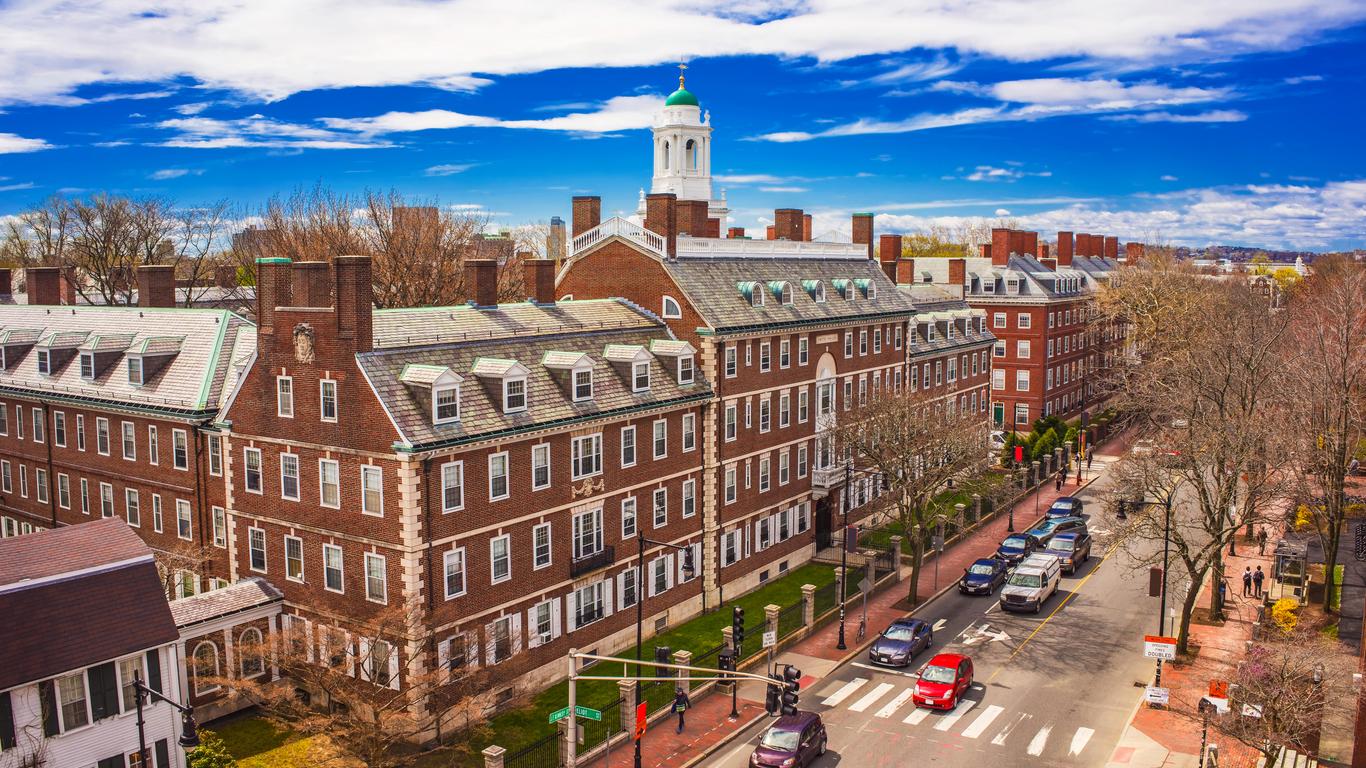
Cambridge, Massachusetts, is a city renowned for its rich history, vibrant culture, and stunning architectural landmarks. As a hub of academic and technological innovation, Cambridge boasts a diverse array of architectural marvels that reflect its dynamic heritage and progressive spirit. From iconic university buildings to historic structures, the city's architectural landscape is a testament to its enduring legacy.
In this article, we will delve into nine fascinating facts about the architectural landmarks in Cambridge, Massachusetts. Each fact will unveil the unique stories, designs, and historical significance behind these renowned structures, offering a captivating glimpse into the city's architectural tapestry. Join us on a journey through time and architecture as we explore the captivating allure of Cambridge's most distinguished landmarks.
Key Takeaways:
- Cambridge, Massachusetts is a treasure trove of architectural marvels, from the iconic MIT Dome to the historic Longfellow Bridge, each structure tells a unique story of innovation and design evolution.
- The city’s rich heritage is reflected in its architectural landmarks, showcasing a blend of tradition and modernity. From colonial gems to modernist structures, Cambridge offers a captivating journey through time and design innovation.
The Harvard University Campus is an Architectural Marvel
Nestled in the heart of Cambridge, the Harvard University campus stands as a testament to architectural grandeur. The campus boasts a diverse array of architectural styles, from the Georgian Revival of Memorial Hall to the modernist design of the Carpenter Center for the Visual Arts. Each building tells a unique story, reflecting the evolution of architectural trends over the centuries.
The MIT Dome: A Symbol of Innovation
The iconic dome atop the Massachusetts Institute of Technology (MIT) is a striking architectural feature that symbolizes the spirit of innovation and academic excellence. Designed by architect William Welles Bosworth, the dome serves as a beacon of inspiration for aspiring engineers and scientists, embodying the pioneering ethos of the institution.
The Longfellow Bridge: A Historic Landmark
Spanning the Charles River, the Longfellow Bridge stands as a historic architectural marvel, connecting Boston and Cambridge. Designed by Edmund March Wheelwright, the bridge's neoclassical design and intricate detailing have earned it a revered status among architectural enthusiasts and locals alike.
The Brattle Street: A Showcase of Historic Residences
Brattle Street, often referred to as "Tory Row," is renowned for its collection of historic residences that showcase a rich tapestry of architectural styles. From elegant Georgian mansions to Victorian-era homes, each structure exudes timeless charm, offering a glimpse into the architectural heritage of Cambridge.
The Cambridge Public Library: A Blend of Tradition and Modernity
The Cambridge Public Library stands as a striking architectural fusion, seamlessly blending traditional and contemporary design elements. The historic library building, with its neoclassical façade, harmoniously coexists with the modern addition, creating a captivating juxtaposition of architectural styles.
The Peabody Terrace: Modernist Residential Complex
Designed by influential architect Josep Lluís Sert, the Peabody Terrace stands as a prime example of modernist architecture in Cambridge. The residential complex's bold geometric forms and functional design principles reflect the avant-garde spirit of mid-20th century architecture.
The Radcliffe Yard: A Serene Architectural Oasis
Nestled within Harvard University, the Radcliffe Yard captivates visitors with its serene ambiance and timeless architectural elegance. The historic buildings, including the Radcliffe Gymnasium and the Schlesinger Library, exude a sense of academic heritage and architectural refinement.
The Cooper-Frost-Austin House: A Colonial Gem
Dating back to the late 17th century, the Cooper-Frost-Austin House stands as a colonial architectural gem, offering a glimpse into Cambridge's early settlement history. The house's saltbox design and period furnishings transport visitors to a bygone era, evoking a sense of nostalgia and historical intrigue.
The Mount Auburn Cemetery: A Landscape of Architectural Splendor
The Mount Auburn Cemetery stands as a captivating landscape adorned with architectural splendor, featuring an array of mausoleums, monuments, and ornate tombs. The cemetery's picturesque setting and diverse architectural styles make it a revered destination for both architectural enthusiasts and nature lovers.
Experience the architectural wonders of Cambridge, Massachusetts, as these iconic landmarks weave a captivating narrative of the city's rich heritage and visionary design. Whether exploring the historic streets or admiring the modernist structures, the architectural landmarks of Cambridge offer a compelling journey through time and design innovation.
Conclusion
In conclusion, Cambridge, Massachusetts, is a city steeped in rich architectural history, boasting a diverse array of iconic landmarks that reflect its cultural and academic significance. From the timeless elegance of Harvard Yard to the cutting-edge design of the MIT Stata Center, each architectural gem tells a compelling story of innovation and tradition. As visitors traverse the city, they are enveloped in a tapestry of architectural marvels that serve as testaments to Cambridge's enduring legacy. Whether admiring the historic facades of Longfellow House or marveling at the modernist allure of the Carpenter Center for the Visual Arts, one cannot help but be captivated by the architectural wonders that define this vibrant city.
FAQs
Q: What is the significance of architectural landmarks in Cambridge, Massachusetts?
A: Architectural landmarks in Cambridge, Massachusetts, hold immense cultural, historical, and academic significance, serving as tangible reflections of the city's rich heritage and innovative spirit.
Q: Are these architectural landmarks open to the public?
A: Many of the architectural landmarks in Cambridge, Massachusetts, are open to the public, offering opportunities for exploration, education, and appreciation of their architectural and historical value.
Was this page helpful?
Our commitment to delivering trustworthy and engaging content is at the heart of what we do. Each fact on our site is contributed by real users like you, bringing a wealth of diverse insights and information. To ensure the highest standards of accuracy and reliability, our dedicated editors meticulously review each submission. This process guarantees that the facts we share are not only fascinating but also credible. Trust in our commitment to quality and authenticity as you explore and learn with us.
